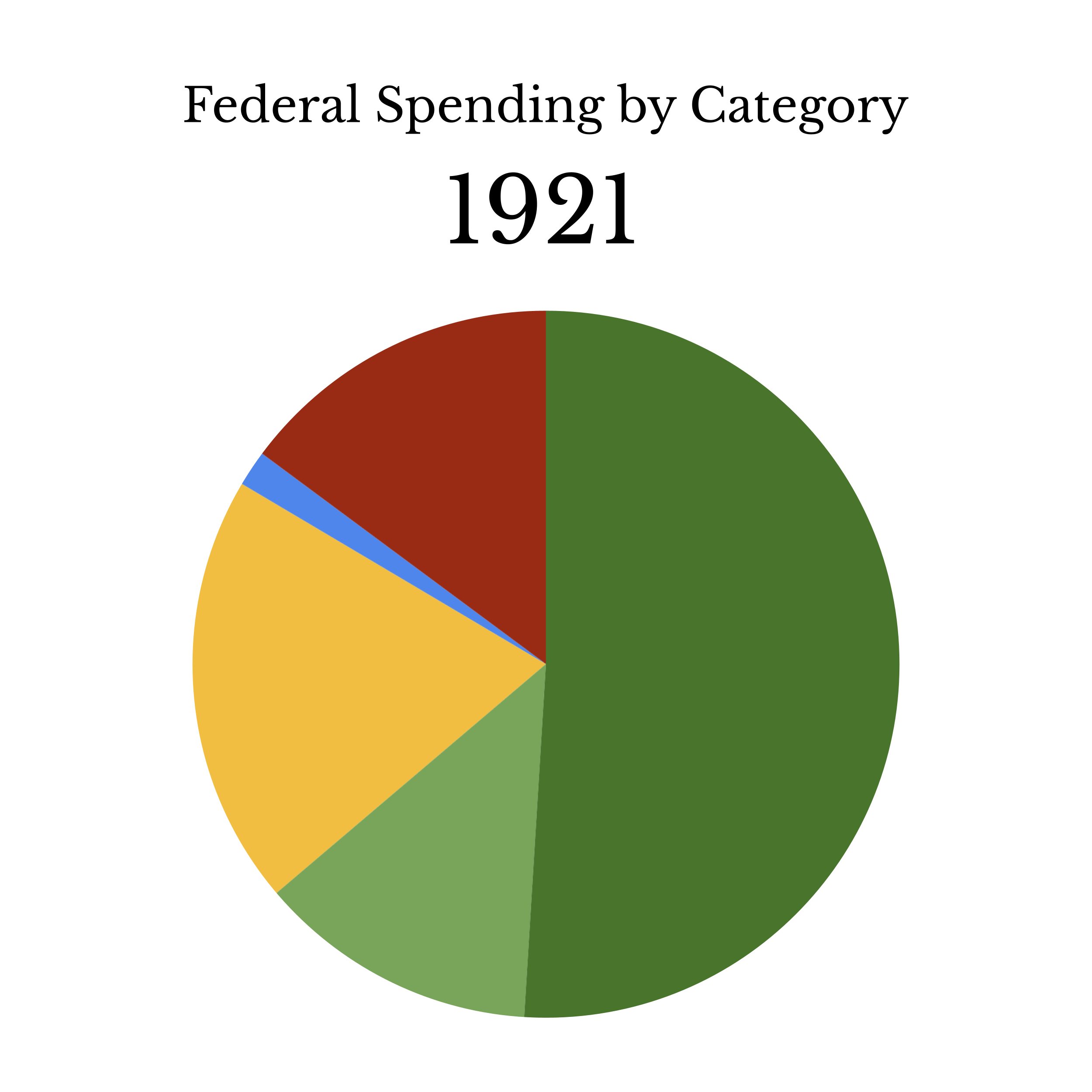
FEDERAL SPENDING
BY CATEGORY
BUDGET PIE CHARTS
Categories
Note: All estimates are approximate.
Sources
Kendrick, M. Slade, and Mark Wehle. A Century and a Half of Federal Expenditures. New York, NY: National Bureau of Economic Research, 1955. https://www.nber.org/books-and-chapters/century-and-half-federal-expenditures
The 1921 and 1929 charts are based on data from Table B1-Panel A in Appendix B to A Century and a Half of Federal Expenditures by M. Slade Kendrick and Mark Wehle (1955). The authors used (and adjusted some) data from the Annual Report of the Secretary of the Treasury for 1950 and other years and then organized these data into five categories — “Military,” “Veterans,” “Interest,” “Foreign,” and “Civil.” Authors derived these five categories from the seven categories used in the 1940 Annual Report (see Table 6, pp. 646-49). “Military” and “Interest” remain unchanged. “Veterans” was relabeled “Veteran Support” to more ably reflect the components it contained in the 1920s and present day. “Foreign” includes both military and nonmilitary aid to foreign countries and has been relabeled “International.” The authors kept foreign military aid separate from ordinary military expenditures because all of it was allocated to governments other than the U.S. government. “Civil” has been relabeled “Domestic Spending and Other” to accommodate the greater breadth of outlays present in this category today. The authors calculated “Civil” by subtracting “Military,” “Veterans,” “Interest,” and “Foreign” from total expenditures.
U.S. Office of Management and Budget. “Historical Tables” in Budget of the U.S. Government for Fiscal Year 2023. OMB. 2022. https://www.whitehouse.gov/omb/budget/historical-tables/.
The 2019 chart is based on data from Table 3.1 in the Historical Tables section of the President’s Budget for Fiscal Year 2023 published by the Office of Management and Budget. Table 3.1 presents outlays sorted by ‘function,’ i.e., the primary purpose of the outlay, and then ‘superfunction,’ i.e., a more top-line summary of outlays. The “Defense” superfunction was relabeled “Military.” The “Veterans Benefits and Services” function was subtracted from the “Human resources” superfunction and then relabeled “Veteran Support.” The “Net interest” superfunction was relabeled “Interest.” The “International Affairs” function was subtracted from the “Other functions” superfunction and relabeled “International.” The category we label “Domestic Spending and Other” was calculated by subtracting “Defense,” “Net interest,” “Veterans Benefits and Services,” and “International affairs” from the total outlays.






















